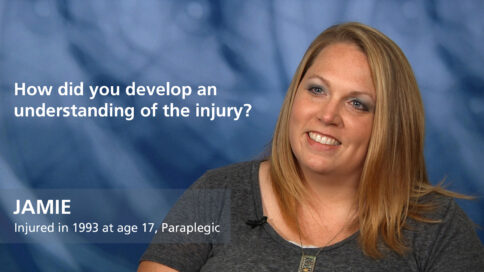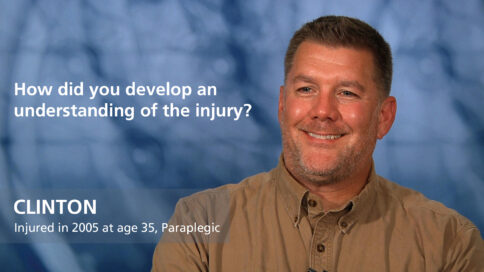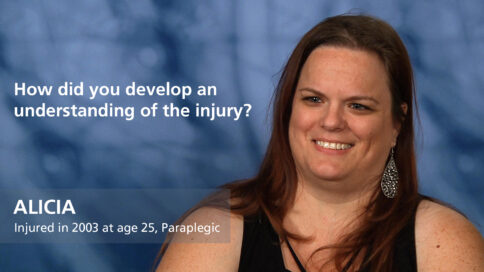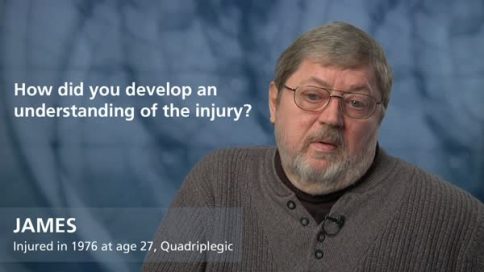Why is the level of a spinal cord injury important? - David Chen, MD
|
|
Why is the level of a spinal cord injury important? |
|
David Chen, MDMedical Director, Spinal Cord Injury Rehabilitation Program, Rehabilitation Institute of Chicago |
||
| Read Bio | More Videos by David Chen | |
|
Share |
||
Transcript
Within the spinal cord, the nerves that go to the different parts of the body—to the arms, to the hands, to the heart, the chest wall muscles, to the legs, to the organs in our body—the nerves come out at different levels of the spinal cord. You can roughly divide the spinal cord into four broad segments: you have the cervical segment, which up here in the neck region; you have the thoracic region, which is from about the top of your collar bone to about your mid-back; and then you have what we call the lumbar and sacral regions, which are at the lower end of the spinal cord. And at each one of those four different levels, the nerves come out that go to the different parts of the body. The nerves that go to the arms and to the hands come up in the cervical region. The nerves that come out to the legs, to the bowel and bladder, come out at lumbar and sacral segments. So if an individual has an injury to the spinal cord at a particular level, it’s going to affect the nerves that come out from the spinal cord at that level and below. So if you have an individual who has an injury up in the cervical segment, the likelihood is that it’s going to affect the nerves that go to the hands and hands to some degree, and then all the other nerves below that region. If an individual has an injury let’s say in the thoracic or lumbar region, then, theoretically, the nerves that go to the arms and hands, which are up in the cervical segment, are spared; therefore, the function hopefully has remained intact.
Show Less|
|
||
add
Why is the level of a spinal cord injury important? |
||
David Chen, MDMedical Director, Spinal Cord Injury Rehabilitation Program, Rehabilitation Institute of Chicago |
More Videos by David Chen | |
| Transcriptadd | share | |
Within the spinal cord, the nerves that go to the different parts of the body—to the arms, to the hands, to the heart, the chest wall muscles, to the legs, to the organs in our body—the nerves come out at different levels of the spinal cord. You can roughly divide the spinal cord into four broad segments: you have the cervical segment, which up here in the neck region; you have the thoracic region, which is from about the top of your collar bone to about your mid-back; and then you have what we call the lumbar and sacral regions, which are at the lower end of the spinal cord. And at each one of those four different levels, the nerves come out that go to the different parts of the body. The nerves that go to the arms and to the hands come up in the cervical region. The nerves that come out to the legs, to the bowel and bladder, come out at lumbar and sacral segments. So if an individual has an injury to the spinal cord at a particular level, it’s going to affect the nerves that come out from the spinal cord at that level and below. So if you have an individual who has an injury up in the cervical segment, the likelihood is that it’s going to affect the nerves that go to the hands and hands to some degree, and then all the other nerves below that region. If an individual has an injury let’s say in the thoracic or lumbar region, then, theoretically, the nerves that go to the arms and hands, which are up in the cervical segment, are spared; therefore, the function hopefully has remained intact.



































